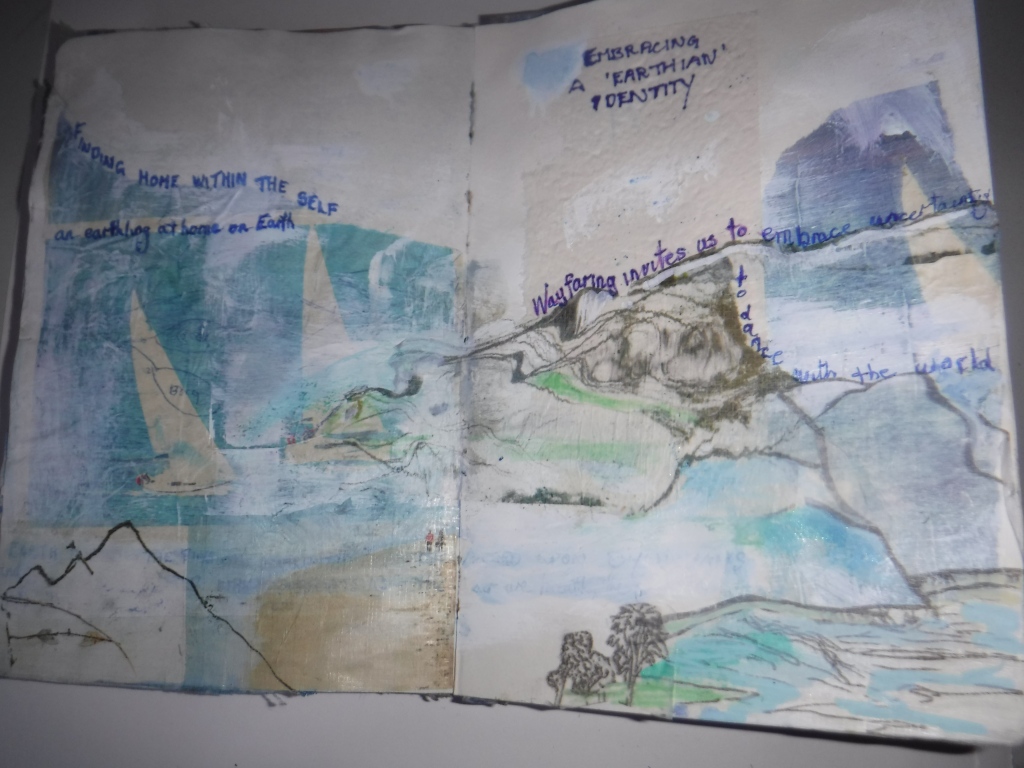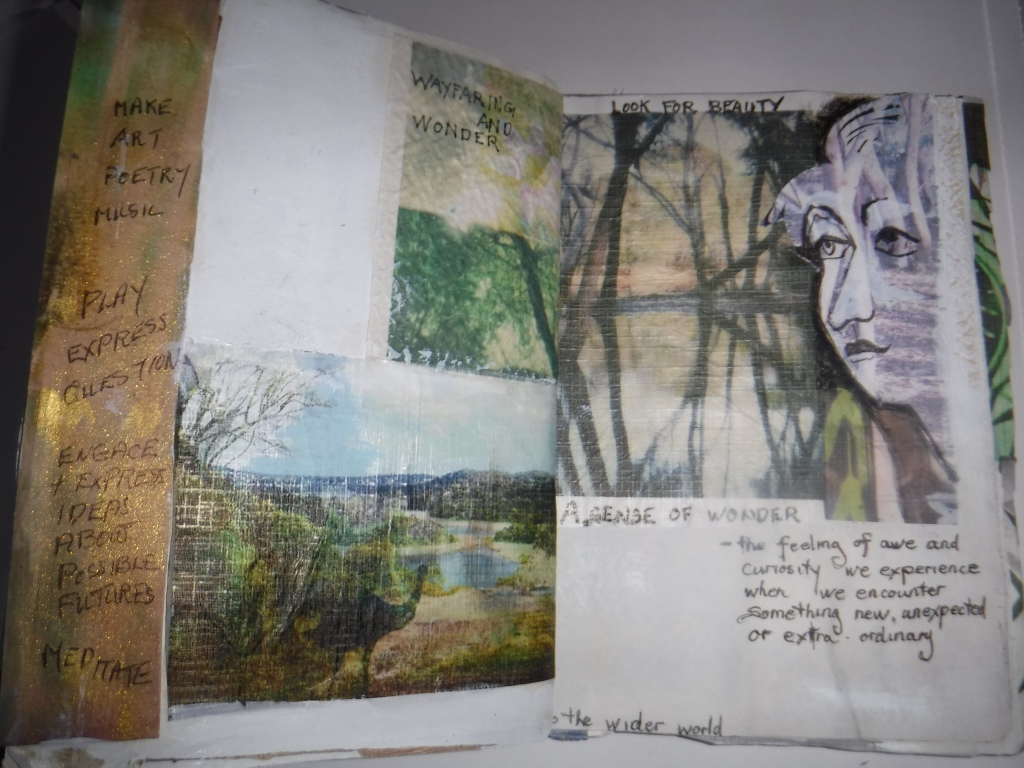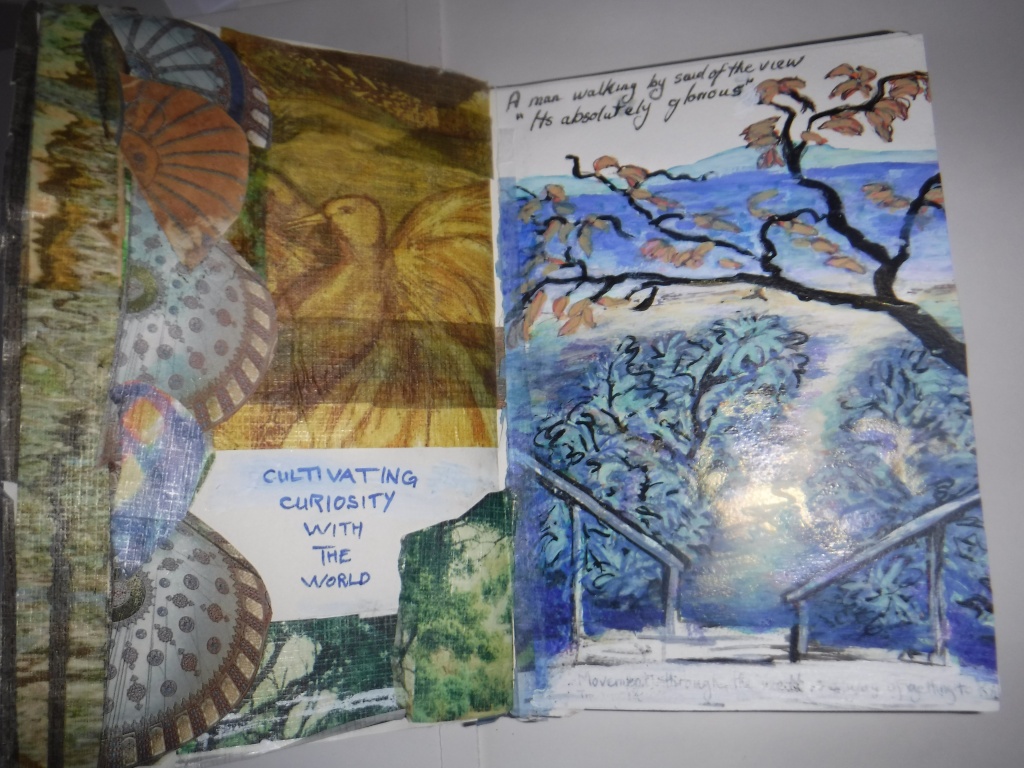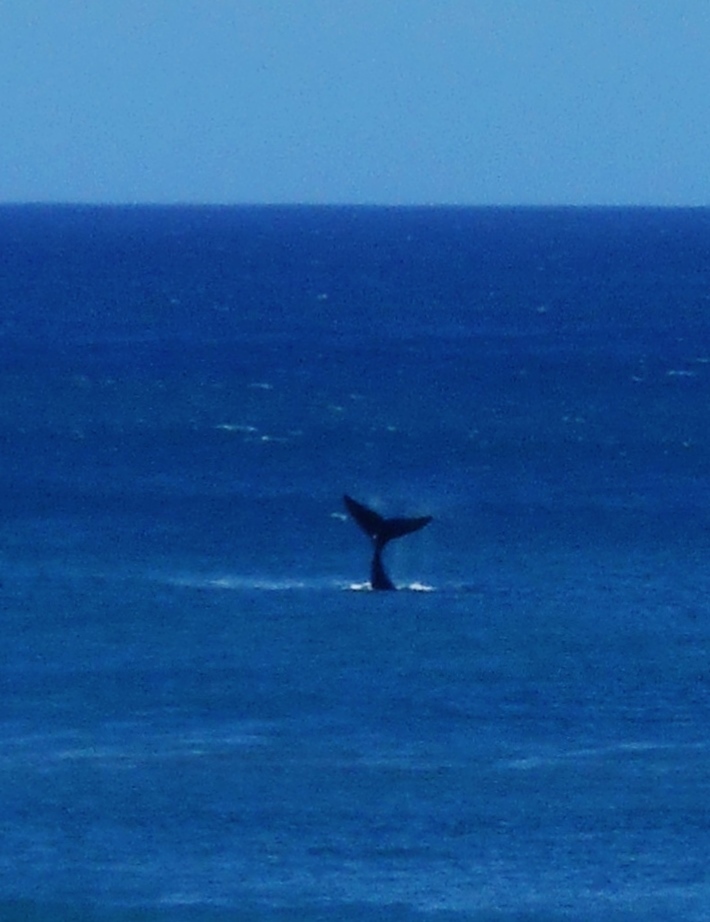I’m still pondering the quote I posted yesterday:-
“We are the land … the Earth is the mind of the people as we are the mind of the earth. The land is not really the place (separate from ourselves) where we act out the drama of our isolate destinies. It is not a means of survival, a setting for our affairs … It is rather a part of our being, dynamic, significant, real. It is our self …” Paula Gunn Allen, Laguna Pueblo (1979)
The distance between the way most of us think about what it means to be human and the idea of humans as the mind of the Earth is so vast, I can’t quite imagine how we could ever get to that point. Still, our current way of thinking is just getting us deeper and deeper in the shit so, the way I see it, trying to find alternative ways of thinking is worth attempting.
The anthropologist, Tim Ingold says humans do not live in the world but move through it. He uses the term ‘wayfaring’ to describe the experience of walking through the world in slow, intuitive ways that connect to life. Such experiences broaden our knowledge of the world as we open up to the awareness that we co-exist with other beings, both human and non-human.

Wayfaring through the world also opens up to experiences of awe and wonder. The Australian biologist and TV journalist, Julia Baird says “Awe is something not easy to define, but usually involves stopping in your tracks, being amazed by something and, often, feeling small against the full scale of the universe.” https://www.abc.net.au/news/2023-09-03/awe-hunters-stunning-secret-solace-wonder-transformation/102755992
Many awesome experiences involve some grand adventure or some out of the ordinary experience like seeing phosphorescence on the sea but is possible to experience moments of awe and wonder within the everyday. The way the light falls across a puddle on the pavement, a sudden unexpected sight of an eagle wheeling in the wind above city buildings, or the simple sight of an ant carrying a crumb three times larger than itself can be moments when we are taken out of ourselves and into the wider world. Opening to these moments and slowing down enough to actually notice them is the challenge.

Another way we can stimulate feelings of connection to the world is through curiosity. Recently I’ve been learning more about the mangrove trees that grow along a riverbank near my house. I was amazed to learn the little trunks sticking up out of the water are actually how the trees breathe. I thought they were simply trunks that hadn’t grown any leaves. Learning that breaking these breathing tubes can kill the trees has made me more aware how I move along the river bank. Now I know one careless step could kill a tree that plays a vital role in capturing carbon out the atmosphere:-
“Blue Carbon is CO2 that is captured by coastal wetlands mangroves, salt marshes and seagrasses. It can remain in the sediment for thousands of years, making it one of the most powerful natural solutions to climate change.” – The Nature Conservatory, Australia.

Walking meditations, forest bathing and bird watching are all also suggested as ways to connect to nature. I love wandering through the bush or beside the sea enjoying the beauty of the world and sometimes that’s enough –
sometimes it’s necessary to turn of the News, to move away from the social media feed, to unplug the mind and just be in nature.
Today is the equinox – a time of balance when the day and night are of equal length. In the old Earth ways this was always considered a sacred time. A moment when the Earth rests in harmony.
Letting ourselves feel these sacred moments is part of the process towards becoming more attuned to nature – to move towards understanding ourselves as part of nature.


You’re right, Suzanne: observing the world can produce moments of awe, as can learning about how other creatures work and interact.
LikeLiked by 1 person
Yes, learning about the mangroves really changed the way I think about those sticks poking out of the water. 🙂
LikeLiked by 1 person
I’ve made notes to your previous post and will comment in a bit. Love the conversation.
LikeLiked by 1 person
Thanks so much Petru. It’s a deep dive that I started to find my own direction. It’s great you’re appreciating it too. 🙂
LikeLiked by 1 person
We don’t need to search the world for magic–it’s everywhere. We do well to pay attention to, and keep well, where we are instead of always longing to be where we are not. Well said. (K)
LikeLiked by 1 person
Thanks so much. I’m glad you are tuned into earth magic too. 🙂
LikeLiked by 1 person